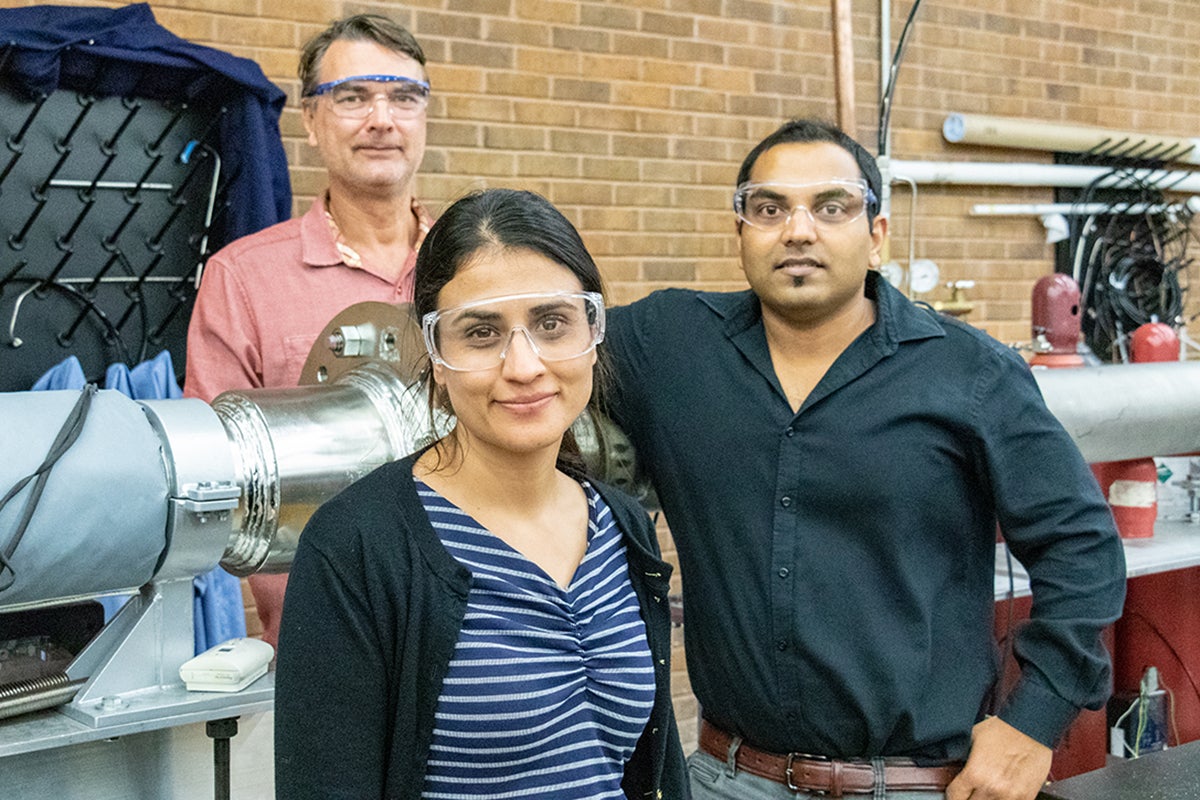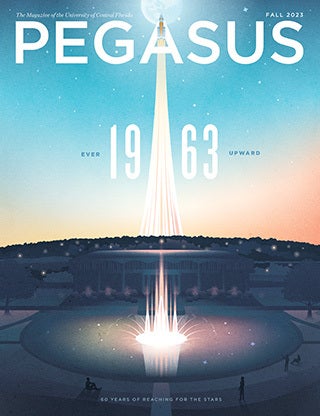University of Central Florida Associate Professor Subith Vasu and a . The results were published recently as a cover story in The Journal of Physical Chemistry.
Through his work, Vasu discovered how long it takes for toxic chemical compounds to deteriorate in the intense fire of an explosion, as well as what chemical products are created after their destruction.
“When destroying chemical weapons, you make sure they’re destroyed and have nothing lingering that could make people sick,” says Vasu, a researcher in UCF’s Department of Mechanical and Aerospace Engineering.
Vasu collaborated on this research with mechanical engineering doctoral students Sneha Neupane and Ramees Rahman and chemistry Associate Professor Artëm Masunov.
Historically, the U.S. government and U.N. have burned chemical stockpiles in incinerators or burned them in the middle of the ocean.
To figure out the combustion mechanisms of the toxic chemical compounds, the research team used a shock tube to recreate the high temperature and high-pressure conditions found inside the mass explosion of a bomb. Then, they looked at what molecules were present in the aftermath.
The research team didn’t use real chemical weapons in their experiments because of the toxicity. Instead, they used simulant compounds that have similar molecular structures.
After they ran experiments with the simulants in the shock tube, Neupane and Masunov took the collected data and compared it with a computer model that was created in the early 2000s by the Department of Defense.
“We found that the model was very much off from the experimental data that we got,” Neupane says. “So, this is one of the reasons why the experiments were so important — because no one had done the experiments at this high temperature. And then using the experimental data as a benchmark, we were able to improve the model.”
Vasu says his previous development using lasers to describe the environment inside of a fire was instrumental advancing this research.
Vasu earned his doctorate in mechanical engineering from Stanford University and was a postdoctoral researcher at Sandia National Laboratory. He joined UCF in 2012 and is also a research associate with the UCF Center for Advanced Turbomachinery and Energy Research, which is part of UCF’s Department of Mechanical and Aerospace Engineering.
The work was funded by the U.S. Department of Defense’s Defense Threat Reduction Agency.





